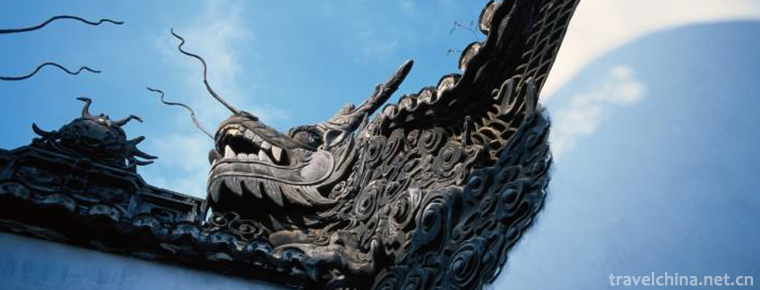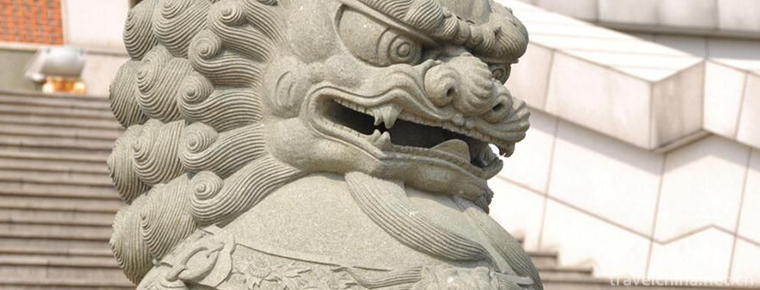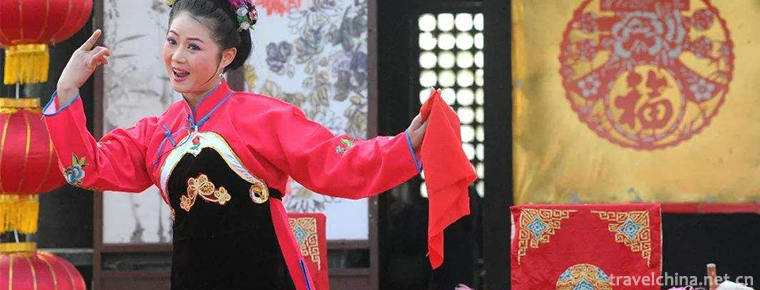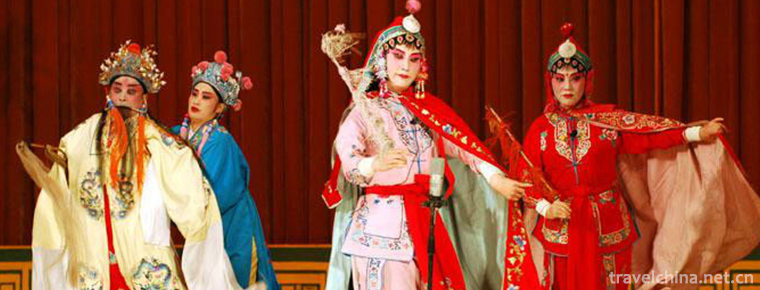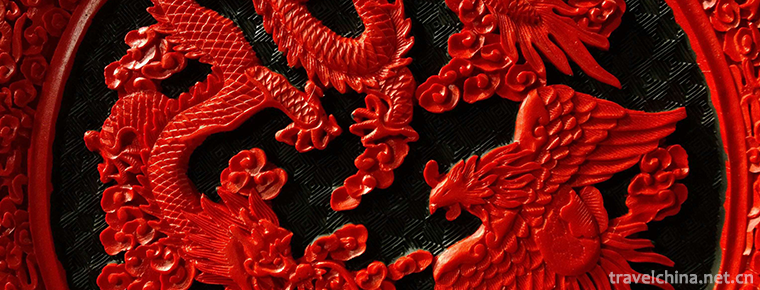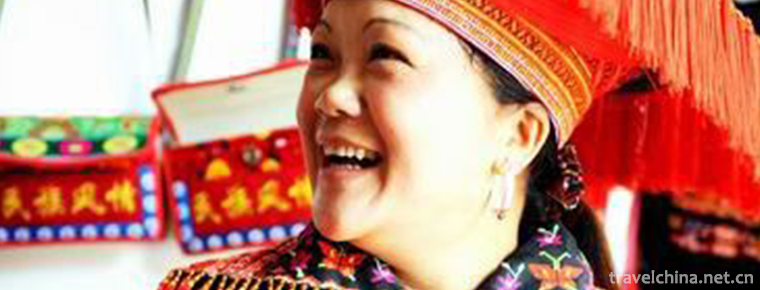Adjustment and suspension
Adjustment and suspension
Lifting is a unique folk sports event in Shaoxing City, Zhejiang Province. Appeared in the middle and late Qing Dynasty, the tuning and hanging actors were named "tuning and hanging" because they performed various bionic movements on two hanging cloths, in addition to the hanging movements, they were supplemented by "dancing", which means that the performers used the hanging and hanging techniques on the hanging cloth. Thereafter, it can be used as a single performance item in the stadium, as well as a little pink ink as the performance content in temple fairs or Shaoxing Mulian Opera. It is a national intangible cultural heritage project with local and representative characteristics in Shaoxing. No matter how it is presented, it enjoys a high reputation in Shaoxing's theatre stage and even in the history of folk sports in China.
On June 7, 2008, the second batch of national intangible cultural heritage list was selected by the State Council for approval.
The Origin of Adjustment and Lifting
Adjustment crane, also known as "male suspension" and "72 suspension". It is a space hanging movement that uses body language to perform. As a personal exercise method and folk juggling, it has a long history. The legends of the Tang Dynasty, Taiping Guangji of the Song Dynasty and Strange Tales of Liaozhai in the Qing Dynasty all have excellent descriptions of the related aerial acrobatics in history, which shows that there have been superb aerial acrobatics performances in China since the Tang Dynasty.
The first well-known hanging artist in Shaoxing was Jin Axiang, who worked as a boat-shaker at the Cangqiaotou of Shaoxing City in the late Qing Dynasty. For the purpose of physical fitness, I think the juggling of "triple hanging" and "single hanging on bars" is a very good method of physical fitness, which is very helpful to rowing. So, in his spare time, he hangs the rope on the branch and does some simple swing movements on the rope alone to strengthen himself. Through continuous exploration and practice, the complex movements from "18 hangs" to "49 hangs" have been gradually created. Then they went to meet the gods and play with this skill in temple fairs, which attracted many audiences. Later, in order to attract more audiences, Mulian Opera Troupe invited him to perform. Since then, this skill has been borrowed by Mulian Opera, and has become the protagonist on the stage of Shaoban and Ping An Opera in 1920s.
In the early 20th century, Jin Axiang taught this skill to his two sons, Jin Xinxin and Jin Xinyou. On the basis of inheriting this stunt, Jin Xinyou developed his movements to 72 suspensions and became an innovator and master of Jin's suspension technology. From the 1920s to the 1940s, it became famous all over Zhejiang, and was often employed by many folk classes in Shaoxing to perform tunes.
In the 1930s, Jin Xinyou taught this skill to his two sons, Jin Shoukang and Jin Shouchang. After several generations of refinement and processing, the brothers have made bold innovations and greater development in adjusting and lifting skills. Not only has the movement developed to 108 hangs, but also it is more difficult, more dangerous and exciting. Its artistry and ornamentation are also stronger.
In the early days of the founding of the People's Republic of China, as a national form of sports, hoisting appeared in the stadium. Jin Shoukang and his younger brother Jin Shouchang have performed tuning in Shaoxing County, Ningbo District, Zhejiang Province and East China Sports Meets for many times and won many honors. Especially in September 1953, he participated in the First East China People's Sports Congress and won the medal of performance excellence. In November of the same year, as a representative of East China, he participated in the National National Sports Performance and Competition Conference held in Tianjin, and won the Golden Medal and a personal letter of commendation from He Long, then director of the State Sports Commission. It is also published in People's Daily, Liberation Daily and People's Pictorial. In 1961, in commemoration of the 80th anniversary of Lu Xun's birth, Jin Shoukang and others performed at the Dongpo Theatre in Hangzhou. Premier Zhou Enlai watched the performance and received all the actors.
In the late 1960s, Jin Shouchang trained his son Jin Guangxia and daughter Jin Yuezhen to practise the skill of adjusting and hanging, which was passed on from generation to generation.
In May 2007, Shaoxing was selected as the first group of intangible cultural heritage, the second group of Zhejiang intangible cultural heritage in June of the same year, and the second group of national intangible cultural heritage in June of 2008. Jin Shouchang and his second son, Jin Guangxia, were awarded the only "representative successors" at the national level and "representative successors" at the Zhejiang level respectively.
Because hanging is a hanging skill performed in suspension, Jin Xinfa, the handler of Jin Jia's hanging, named "flying all over the sky", Jin Xinyou as "flying all over the sky", Jin Shoukang as "Xiao Fei", and Jin Shouchang as "Xiao Yanfei".
The spread of tuning and hanging has a great relationship with its borrowing by Mulian Opera. Historically, some performers of Shangyu, Shengzhou, Xinchang and Zhejiang Shao Opera Troupe around Shaoxing have also played the role of "male hanging".
Today, the form and content of folk activities in temple fairs, the main carrier of tuning and hanging performances, have changed greatly, and the performances of Mulian Opera have basically disappeared. Therefore, the performance of tuning and hanging is decreasing day by day, and the inheritance of skills is also declining naturally.
Main Value
Academic Cultural Value
The cultural value of tuning and hanging lies in its performing arts, which links the ancient traditions of "exorcising nuo" and "mulian opera".
Jin Axiang, the first famous artist in Shaoxing, was an important pioneer in the art of tuning and hanging. Jin Axiang began to take part in the performances of Yingshen Competition and Temple Fair after practicing tuning and hanging skills. The performances at this time belonged to juggling and acrobatics. Later, he made a guest appearance in the "Grand Opera" (Mulian Opera) of the professional theatre troupe, which surpassed the category of "Mulian Opera" as a single skill and endowed it with new specific artistic life and far-reaching significance. Especially with the "female hanging" performance, in the late Qing Dynasty for the juvenile Lu Xun saw, and in his later years, "female hanging" article, made a brilliant record, called "male hanging", which gives it a special cultural significance.
The Value of Art Appreciation
Over the past two hundred years, generations of artists have refined and processed wonderful lifting movements from their lives, creating many difficult movements such as "boy worship the moon", "golden chicken independence", "cross hanging", "eagle whirling", "dragonfly dotting water", "hungry wolf pouncing tiger", "spider silking". They are not only thrilling, stimulating, but also very artistic and appreciative. Its performance in body language and mime form is easy to understand and artistically appealing. It is not only popular with the domestic people, but also conducive to overseas cultural exchanges. As the classic content of Shaoxing Mulian Opera, tuning and hanging, together with "Female Hanging" and "Impermanence", has become the most regional feature of Shaoxing, which is unique to other Mulian Opera. Therefore, drama researchers at home and abroad have always paid attention to it.
The Value of Sports and Fitness
As a traditional sport item, "adjusting hoisting" is to complete a set of difficult movements such as static, dynamic, rotating, turning, turning and hanging on a piece of suspension cloth. It has very high physical qualities such as strength, sensitivity, softness, speed and endurance, especially for the training of astronauts'vestibular endurance under weightlessness and military special forces. Value. Non-professional performers can also do some simple movement training under the guidance of professional personnel to achieve the goal of physical fitness.
Therefore, it has certain reference value for sports and folk sports, as well as for the performing arts and military training.
Performing Form
The equipment for the performance is very simple. The most important thing is a piece of white cloth about ten feet long. There are three forms of deduction according to different situations:
1. As a "male hanging" performance in Mulian Opera. Because of the need of the plot, the actor is barefoot, wearing only a pair of calf shorts and facial decoration; the main instruments in the backcourt are eye-catching, gongs, drums and cymbals;
2. As a folk sports performance, perform on the sports ground. Four bicycles are arranged into four squares, one bamboo pole is erected on each bicycle, and then cross-connected with the bamboo pole. The hanging cloth is tied at the crossing point. When the four bicycles are running at the same time, the adjusting and lifting technique is performed.
3. As an aerial acrobatics, perform alone on the stage. The performances can be matched with music with national characteristics that can be adapted to the tuning and hanging movements.
Motion characteristics
The lifting action is performed in the order of single cloth and double cloth. It is divided into four parts from foot to head. First, lower limbs are hung, then upper limbs are hung, and finally neck is hung.
First, the performance of pure body movements. The performance of tuning and hanging is a pure body movement. There is no line from the stage to the stage for the actors. Second, the life of action. Many movements of tuning and hanging are created by artists by observing animals such as insects, birds, fish, animals and inspired by daily life. Such actions as "the boy worships Guanyin", "the frog splits water", "the peacock opens the screen" are very vivid. Thirdly, the difficulty of performance. The movement of lifting is from foot to head, which is divided into four parts: first lifting the lower limbs, then lifting the body, then lifting the upper limbs, and finally lifting the neck. Performers sometimes rush to the top of the stage, sometimes rush down, sometimes drill into the cloth ring, sometimes drill out, sometimes roll, sometimes fly around, hang out various names.
Adjust and suspend the successor
Jin Shouchang, National Representative Heritage
The Jin family is the only "tuning" family in China. Since Jin Axiang, the first famous tuning artist of the Jin family in the Qing Dynasty, created the tuning system, it has a history of more than one hundred years. It has been nearly eighty years since Mr. Lu Xun wrote about it in his great notes. The technique of adjusting and hanging has been passed on to Jinshoukang and Jinshouchang brothers, which is the third generation.
Jin Shouchang (1933-), also known as Jin Changlin, artistic name "Xiao Yanfei", began to learn art with his elder brother at the age of seven, and participated in the performance at the age of 13. After the founding of the People's Republic of China, together with elder brother Jin Shoukang, he performed tuning in county, Prefecture and provincial sports meetings many times. He has performed in Zhejiang Shao Opera Troupe, Yifeng Shao Opera Troupe, Xinmin Shao Opera Troupe and Tongxing Shao Opera Troupe. When he was young, he was highly respected by his father. When his father Jin Xinyou died, he taught him three high, difficult and safe reserve actions, which were called "Spider take off silk, hang purple gold bell upside down, and roll silk up and down". Since then, Jin Shouchang has expanded the performance program and skills of "tuning suspension" and developed "72 suspension" into "108 suspension".
In Jin Shouchang's acting and sports career, there is also a skill called "flying cars to the wall". In 1960, he founded the "Red Coast Coach Walking Group" as his main performer. At that time, it was one of the only six "flying car troupes" in China. It was well-known in Jiangsu and Zhejiang, and its reputation spread to Fujian and Jiangxi. It was dissolved in 1963 for some reasons.
Jin Shouchang inherits his father's family training and trains his children to practice the skills of adjusting and lifting, which requires "standardized movement, fast speed, coherence and gracefulness". It is the only salary-bearer from the third to fourth generations of the Jin family. It has played an important role and devoted a lot of effort to the inheritance of the skill of tuning.
Jin Shouchang used to run bicycle industry. When he jointly operated between public and private, his car dealership was incorporated into Keqiao Iron Co., Ltd. and retired from Shaoxing Automobile Parts General Factory in 1982. At the beginning of 2002, on the eve of his 70th birthday, after full preparation, Jin Shouchang jumped on the hanging cloth and recorded video data, which provided very precious video data for the successful application of "tuning hanging" to the national intangible cultural heritage list. In February 2011, Mr. Jin Shouchang was nearly 80 years old. He still made various lifting programs on the hanging cloth, such as "front fork", "double line" and "dragonfly point water". Still agile body, agile movement, fully reflects his deep foundation in youth. Jin Shouchang is not only an inheritor and salarymaker of hanging skills, but also a devout Buddhist. In June 2014, he and his wife spent all their money in Longhua Temple, Huiji Mountain, Shaoxing City, to build a hexagonal seven-storey Buddhist pagoda over 40 meters high, but they fulfilled their lifelong aspirations. The heart of compassion is awesome. In June 2009, Jin Shouchang was awarded a national intangible cultural heritage project by the Ministry of Culture - the representative inheritor of the transfer.
Jin Guangxia, a representative successor of Zhejiang Province
Jin Guangxia is the representative of the fourth generation of inheritors in the recorded pedigree of the Jin family.
Jin Guangxia (1962-), at the age of six, under the guidance of his father Jin Shouchang, began to practice basic skills such as lower back, handstand and support twice a day in the morning and evening. When he was over 10 years old, he had mastered the skills of unicycle, wooden brick roof, turning bucket and so on. Then he began to practice the hanging movement on the hanging cloth hanging on the roof beam at his own house. After 10 years of training, at the age of 15, he had fully mastered the core skills of adjusting and lifting. In the following decades, with his good physical ability and insight, he constantly developed and innovated the movement of hoisting, which made the movement of hoisting more dangerous and more aesthetic. As the fourth generation of inheritors of the "tuning and hanging family", since receiving the training of the tuning and hanging technique, they have never practiced uninterruptedly, and have a deep understanding of the technique. Over the years, he has also carefully sorted out the historical origins and inheritance pedigrees of tuning and hoisting, and accumulated a large number of historical materials. In 2008, Jin Guangxia applied for the national intangible cultural heritage list by adjusting the suspension, providing detailed text and audio-visual information, which laid a good foundation for the success of the declaration.
In order to inherit and disseminate the skills of tuning and hanging, in April 2011, Jin Guangxia initiated the establishment of "Shaoxing Jinshouchang Tuning and hanging Institute", which was recommended by Shaoxing Wenguang Bureau in the same year and recognized as the responsibility unit of tuning and hanging protection by the Ministry of Culture.
In January 2008, it was awarded the project of intangible cultural heritage by Zhejiang Provincial Culture Department - the representative inheritor of tuning and hanging.

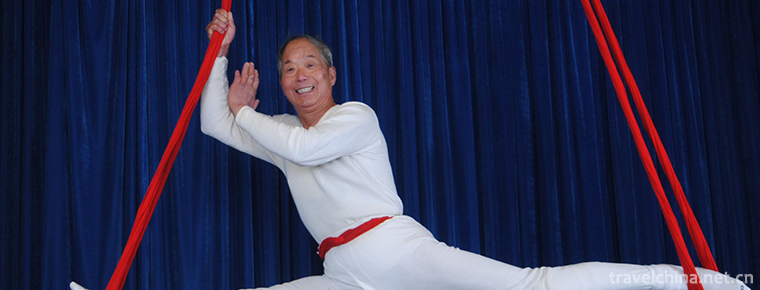
-
Dameisha Beach Park
Dameisha Beach Park was built on June 18, 1999 with a total investment of 120 million yuan.
Views: 230 Time 2018-10-12 -
Strange Stones city in China
Located one kilometer north of Feixian Town, Linyi City, Shandong Province, China's largest ornamental stone base, national AAAA scenic spot, Shandong Province's key cultural tourism industry projects.
Views: 125 Time 2018-12-22 -
Longxing Temple
Longxing Temple, alias Dafo Temple, is located in Dongmenli Street, Zhengding County, Shijiazhuang City, Hebei Province. It was originally Longteng Garden of Yanmu Rongxi after the Eastern Jin Dynasty.
Views: 160 Time 2019-02-06 -
Wulingyuan
Wulingyuan Scenic Spot is located in the northwest of Hunan Province, central China. Its longitude is 110 20'30 ~110 41'15 and latitude is 29 16'25 ~29 24'25.
Views: 150 Time 2019-02-24 -
Construction Techniques of Tibetan Diaolou
Gabu Tibetan ancient building complex is located on the second terrace on the north-east Bank of Mako River, 3 kilometers northeast of Lighthouse Township, Banma County.
Views: 263 Time 2019-04-05 -
Restoration Techniques of Ancient Architecture
Ancient buildings are an important part of historical relics in China. Protecting, restoring and renovating ancient buildings is one of the important tasks in the protection of cultural relics..
Views: 109 Time 2019-05-01 -
Huian stone carving
Hui'an stone sculpture mainly served religion in its early stage, with strong religious color. It is mainly embodied in the architectural design, sculpture and installation of the temple,.
Views: 152 Time 2019-05-05 -
Liuqin drama
Liuqin Opera, a local traditional drama in Zaozhuang City, Shandong Province, is one of the national intangible cultural heritage..
Views: 142 Time 2019-05-14 -
Mao Qiang
Maoqiang is a local opera popular in Weifang, Qingdao, Rizhao and other places. It was originally a folk humming tune called "Zhou Gu Tune". Legend has it that Maoqiang was named after a nun.
Views: 92 Time 2019-05-30 -
Yangzhou lacquerware decoration skills
Yangzhou lacquerware painting process is cumbersome, the step is "batch putty scrape gray, brush paint and push light". During the Warring States Period, Yangzhou lacquerware decoration tech.
Views: 205 Time 2019-07-10 -
Yao Costume
Yao people used to call themselves "Guoshan Yao", "Hongtou Yao", "Dabanyao", "Pingtouyao", "Blue Indigo Yao", "Shayao" and "Baitou Yao&.
Views: 294 Time 2019-07-11 -
Neijiang medical and health
By the end of 2019, there are 3303 medical and health institutions in Neijiang, including 76 hospitals (56 private hospitals) and 3200 primary medical and health institutions. There are 25900 beds in medical and health institutions and 21100 health technical personnel, .
Views: 328 Time 2020-12-16





